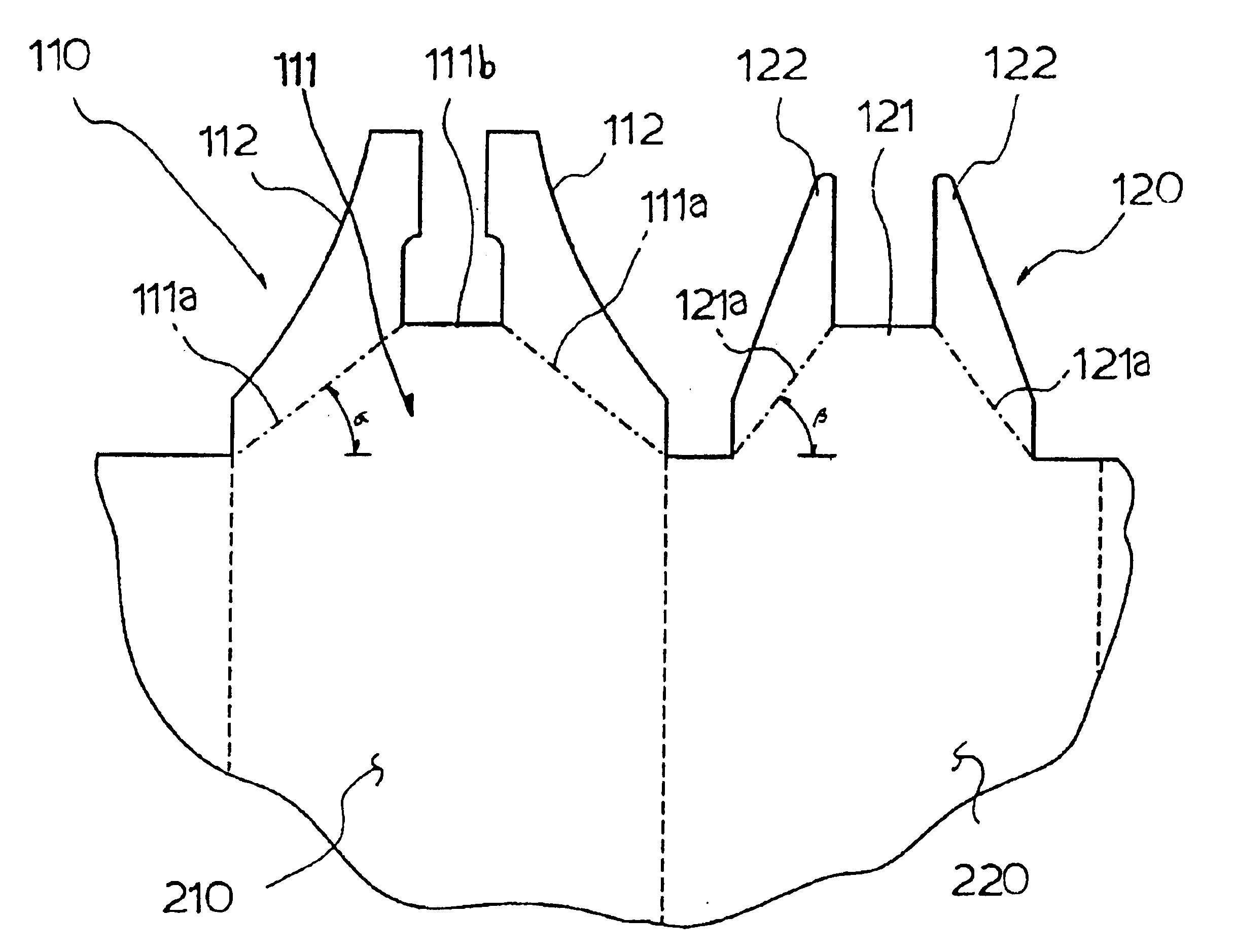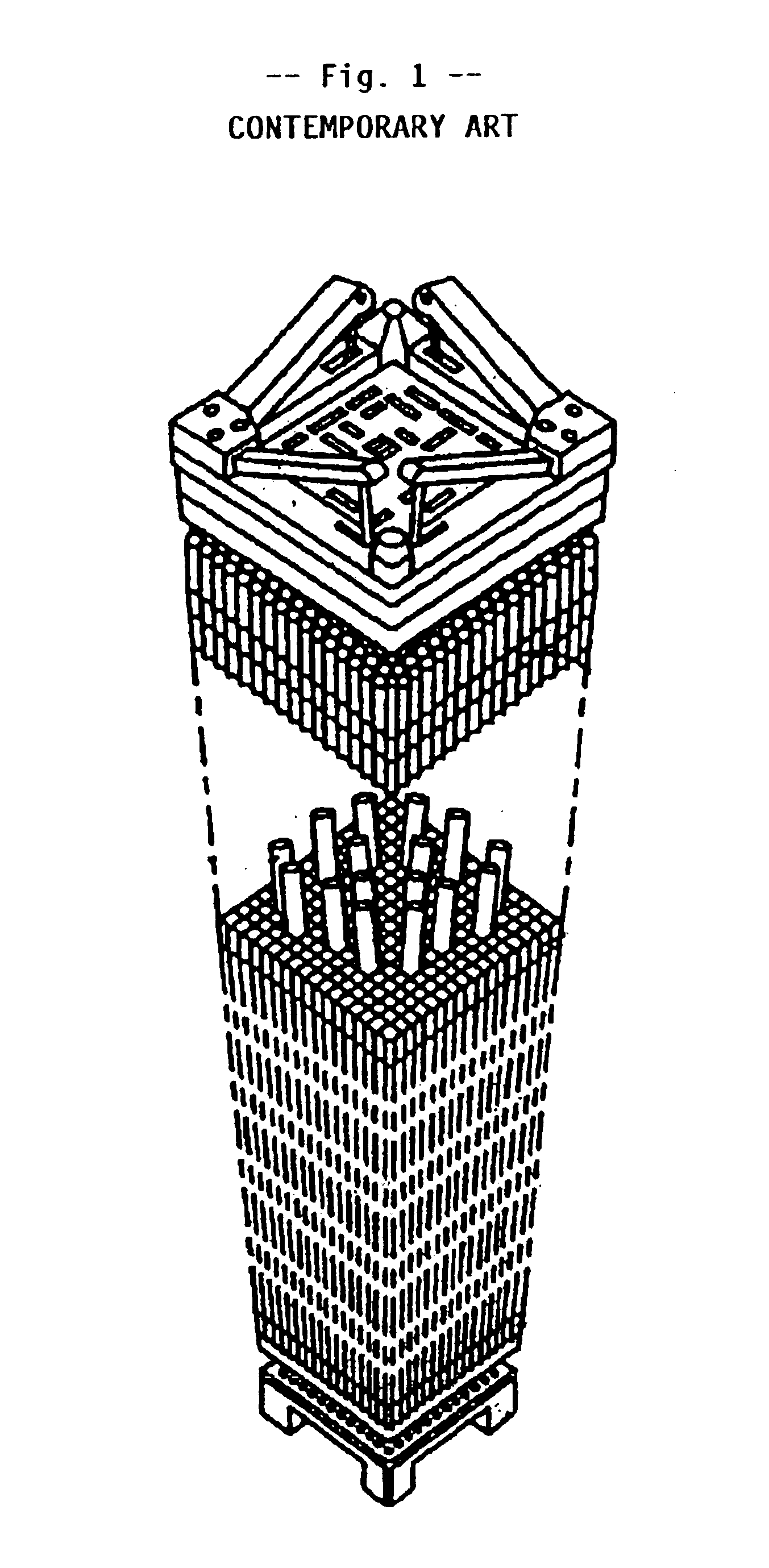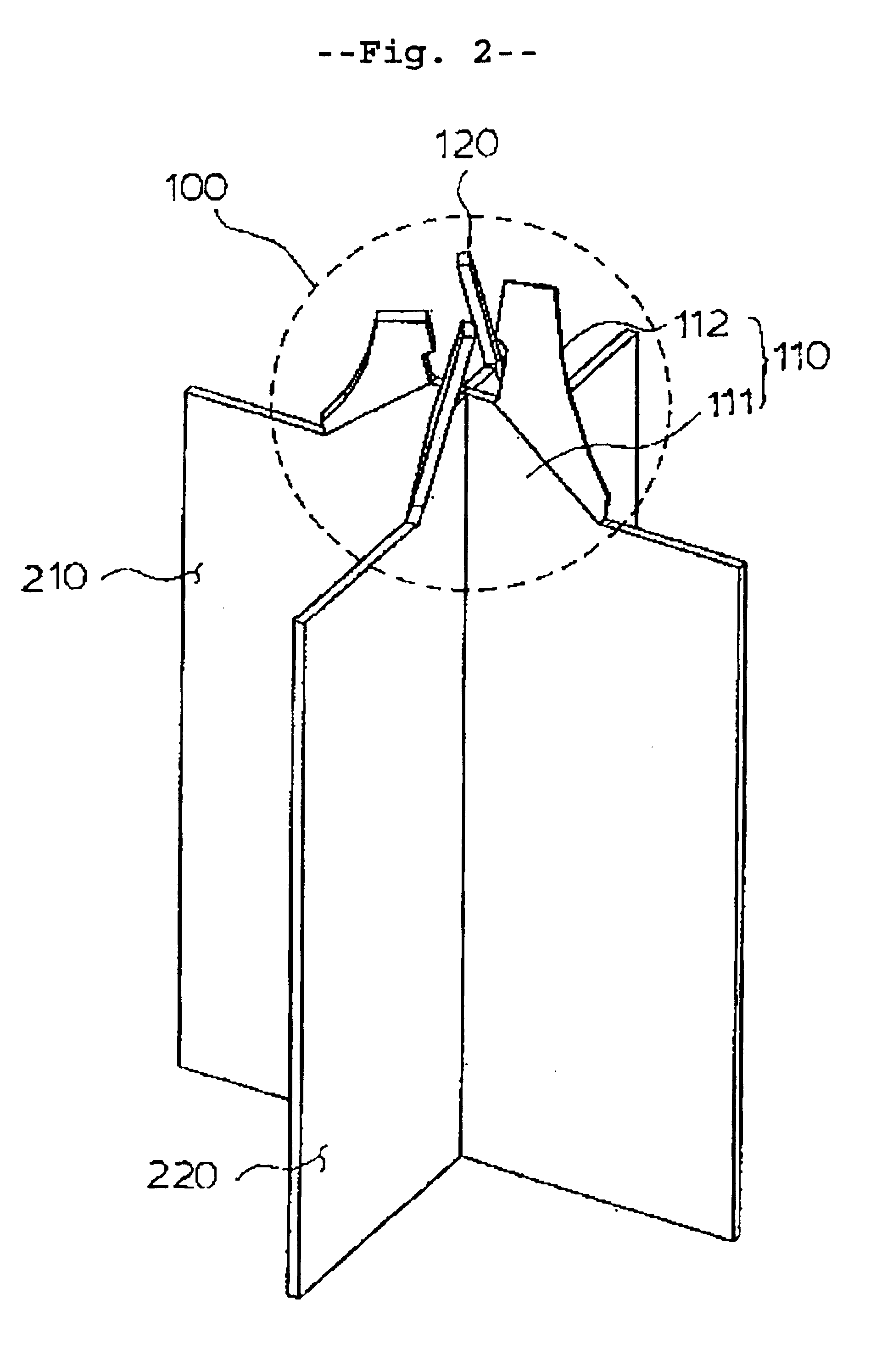Spacer grid with hybrid flow-mixing device for nuclear fuel assembly
a technology of nuclear fuel and flow mixing device, which is applied in the field of spacer grids, can solve the problems of contaminating the nuclear reactor, non-uniform distribution of coolant temperature in the channel, and paralysis of heat transfer
- Summary
- Abstract
- Description
- Claims
- Application Information
AI Technical Summary
Benefits of technology
Problems solved by technology
Method used
Image
Examples
Embodiment Construction
This invention is related to the flow-mixing device on the top of intersected strap junctions in the spacer grid for the nuclear fuel assembly as shown in FIG. 1. FIGS. 2, 3, and 4 show a hybrid flow-mixing device on a strap junction in different directions. As depicted in FIG. 5, each strap is composed of two types of strap units, called a primary strap unit and a secondary strap unit, and alternately arranged along the strap. The primary strap unit 210 is a strap section having a primary vane set 110 and a secondary strap unit 220 is a strap section having a secondary vane set 120. As shown in FIG. 6, the straps intersect at right angles, and the primary and secondary strap units 210 and 220 form the intersections. A hybrid flow-mixing device 100 is formed around the top of each intersection.
The object of the primary vane set 110 is mainly to take place the forced cross flows of coolant from its channel to neighboring channels in the fuel bundle. As shown in FIG. 5, this primary v...
PUM
 Login to View More
Login to View More Abstract
Description
Claims
Application Information
 Login to View More
Login to View More - R&D
- Intellectual Property
- Life Sciences
- Materials
- Tech Scout
- Unparalleled Data Quality
- Higher Quality Content
- 60% Fewer Hallucinations
Browse by: Latest US Patents, China's latest patents, Technical Efficacy Thesaurus, Application Domain, Technology Topic, Popular Technical Reports.
© 2025 PatSnap. All rights reserved.Legal|Privacy policy|Modern Slavery Act Transparency Statement|Sitemap|About US| Contact US: help@patsnap.com



